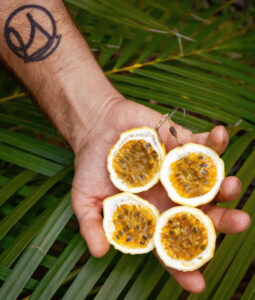
The Crop Crusader
“This is wisdom that took thousands of years to develop.” —Erica Klopf

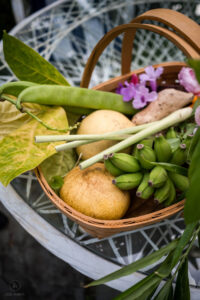

The Produce Promoter

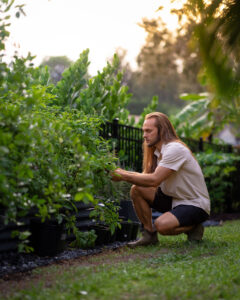
The Food Forester
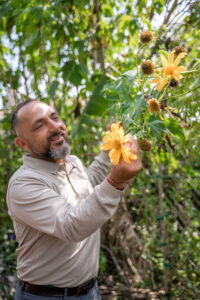
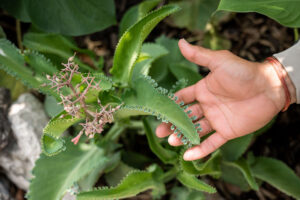



Related Images:
Source: gulfshorelife.com
Enjoy the work and experience of growing your own food.

“This is wisdom that took thousands of years to develop.” —Erica Klopf










Source: gulfshorelife.com



Source: indiaeducationdiary.in


If I were restricted to one gardening implement it would always come down to the border spade. Short of snipping twine, or preparing a deckchair gin and tonic, there is little I can’t achieve in the garden with this hardy, slim-size and most cooperative of tools.
Whether it’s digging out borders, edging lawns, planting-out, laying mulch and – lay aside thy fork! – dividing perennials, this is the perfect tool for me.
Buy: £42.99, burgonandball.com

Without adjustable tension, all garden wires will eventually slacken, which is a nightmare for climbing plants, espalier fruits and vines alike. Enter the turnbuckle: a hook at one end, an “eye” at the other and a tightening casing in the middle, these are added to a wire (hooked on to a vine eye or wall screw) to ensure perpetual tautness. I find myself purchasing more of these than any other single garden item – they’ve never let me, or my plants, down.
Buy: £2.54, diy.com

Niwaki’s Hori Hori knife is a prime example of a comparatively “luxury” tool that actually serves an invaluable function. It’s the implement gardeners so often live without yet quietly covet, hoping someone will one day gift wrap. Known as a Japanese trowel, yet more closely resembling a Shakespearean dagger, the hard-wearing, steel-wrought Hori Hori’s versatile uses include excavating stubborn, deep-rooted weeds, planting seedlings and harvesting crops.
Buy: £32, niwaki.com
One thing I could live without …
Years ago I was kindly given a “potato harvester”: a bevel-edged, slatted scoop of a hand tool made for thrusting into the earth and sieving out ripened potatoes. It remains beautiful on the shed shelf, but could never quite compete with the joy of rummaging with hand and fork.
Matt Collins

Natural fibre twine or rope made from jute or hemp is relatively low cost, renewable and handy for all sorts of situations from tying in heavier climbers, to securing young saplings to tree stakes. Thicker 4mm twine is particularly handy for tougher jobs, such as attaching to polytunnel or greenhouse beams to twirl around tomato vine stems, or supporting heavy fruit-laden plants without the need for canes. Twine is better than metal or plastic ties because it is soft on plant tissue and will eventually rot, making it good for the environment and preventing it from cutting into expanding plant stems and branches, as metal can over time.
Buy: £0.40/m, thehempshop.co.uk

For years I’ve been using a 30cm long-handled trowel and hand fork, and I would choose them over regular-length hand tools. I find the extra length is much easier for reaching into existing plantings to add new plants or to remove any. It also gives more leverage when digging into heavy soil, protecting my wrists from repetitive strain, which I have to be mindful of, working in other people’s gardens as well as my own.
Buy: £14.94, primetools.co.uk
One thing I could live without …
Rooting hormone powder has been around for decades, said to help cuttings root, but the tub I bought years ago sits in our shed unused because cuttings root perfectly well without it. The most important thing with cuttings is to maintain warmth to encourage growth and humidity to prevent them drying out.
Jack Wallington

There would be a line of mud from my backdoor right through the house that was deep enough to sow seeds in if it wasn’t for these clogs. Pleasing shape, with a sole substantial enough that you can dig in them. Warm in winter, particularly when paired with goat socks and, best of all, you can chuck them in the washing machine when they get too filthy.
Buy: £60, birkenstock.com or £59.98, nisbets.co.uk

The idea here is that copper will deter the slugs. I can’t attest to that – my garden is still full of them – but what these tools will do is save your wrists. I have had my trowel for years; it remains sharp and can cut through even compacted, difficult soils. It’s a joy to handle, lightweight and comfortable, and the more you use it the more the copper shines.
Buy: £42.40, thenaturalgardener.co.uk or from £50, burford.co.uk

I inherited my Haws watering can from my mother, so it’s easily 50 years old and is still in perfect condition. One of the things I love about this design is that even when it is full to the brim it won’t spill when you walk with it. Its balance is impeccable and the long spout means it is easy to reach pots at the back of a cluster. The “one gallon” is particularly good if you don’t want to handle a heavy can and I’ve always favoured the oval bedding rose heads (turned upwards) for the gentlest of rain-like showers. It is by no means a cheap watering can, but it is a present for life (and beyond).
Buy: £80 (one gallon), haws.co.uk
Two things I could live without …
I wouldn’t buy brand new wooden garden furniture: it’s expensive and it’s hard to do it sustainably. If it’s well made, which is frankly all you want, then it’s better to buy second hand. It really only starts to look nice when its silvered and bit weathered, so you may as well let someone else look at it while it’s orange. Tip: if you want it to last, you need to cover it over the winter! Try preloved.co.uk, eBay, Facebook Marketplace, vinterior.co, or your local antique shop or reclamation yard.
I wouldn’t buy semi-mature trees; that’s anything with a stem of more than 20-25cm diameter and roughly more than 2 metres tall. Buy a whip (they start at 30cm tall and go up to 100cm) for a fraction of the price. Within five years or so it will start to catch up, within eight you won’t be able to tell the difference. A semi-mature tree needs A LOT of love to happily settle in – it was invested in life elsewhere. A whip may look insubstantial, but it is still at a stage where it can adapt, and requires a fraction of the water to do that. Also, there’s a lot less wastage environmentally in transportation, and in materials to wrap and move it. And for the price of one semi-mature tree you can buy a small forest of 30cm whips.
Alys Fowler

I’ve always prided myself on being something of a gardening minimalist. I don’t covet shiny gadgets or strimmers, my shed holds more bird food than it does tools. Those that are in there are mostly hand-me-downs that are good enough. What I am particular about, however, are blades: I basically only use Niwaki for anything sharp – from pruning saws to secateurs. My trustiest are the Sentei secateurs; a 30th birthday present from my brother which I intend to use for ever. They’re not the most advanced model Niwaki makes, but that means they’re less intimidating. They wear beautifully with the seasons, which only makes them more deeply satisfying to clean and sharpen.
Buy: £38, woodandmeadow.com

I have a couple of white, blue-rimmed enamel buckets with lids, and a sturdy black plastic one with a pouring groove, that kick around by the shed and are used pretty much every time I garden. From shuffling compost around to collecting weeds (let them sit in a few inches of rainwater to mould down for several weeks and you can throw them on your compost pile), hydrating new plants before you bed them in, collecting molluscs to re-home and, of late, giving the toddler a receptacle in which to gather his precious gravel, they are just so handy. Secondhand ones are cheap and charming; I found mine at local hardware shop.
Buy: £26.54, amazon.co.uk
One thing I could live without …
Gifted plant pots without holes in the bottom are invariably relegated to Olio (the community app for giving away, borrowing or lending stuff locally for free). They drown plants or become swimming pools for molluscs.
Alice Vincent

I was given an Opinel No.08 by the wonderful food grower who first trained me, as a congratulations gift for making it through my first growing season under her tutelage, and it has been a reliable companion and colleague ever since. Whether it’s swiftly helping get the salad harvest done, assisting in the pruning of the tomatoes’ side shoots or being poised to cut an emergency piece of twine, every grower needs a solid, quality knife in their pocket at all times.
Buy: £9.95, cyclaireshop.co.uk

Much of the most robust outdoor workwear is tailored for men yet, thankfully, the best work boots – Blundstones – come in women’s sizes. Sturdy yet comfortable, their Chelsea boots are my go-to choice on the days when I’m working on the farm. I know so many farmers who swear by their Blundstones – plus, unlike other work boots, they genuinely look great.
Buy: antique brown boot, £190, blundstone.co.uk

I struggle with chilly fingers. Having worked my way through too many gardening gloves in search of a winter-ready pair, I finally found these gamechanging thermal ones made by Briers. They’re thick without being restrictive, and they keep my fingers from turning blue while I’m getting on with the jobs that need doing during the colder months of the growing season.
Buy: £5.10, justgloves.co.uk
One thing I could live without …
While I’ve never bought one, I’ve always thought that soil moisture meters seem utterly pointless when you could simply stick your finger in the soil and feel the moisture level for yourself.
Claire Ratinon

One of the best ways to master plant care is learning how to observe your plants, and the best tool for that is a hand lens. This little piece of kit will allow you to see leaves and flowers under x10 or x20 magnification. You’ll be able to see fascinating features like trichomes (plant hairs) more clearly, and you may also spot some less welcome guests. Many houseplant pests, such as red spider mite and the younger life stages of thrips and mealy bugs, are impossible to see with the naked eye, so wielding a hand lens can help you spot trouble and treat it before it becomes an infestation. If you can, try to get a good quality lens – triplet lenses are the best – and buy a lanyard so you can wear it round your neck. Lenses get lost (or trodden on) easily.
Buy: £38.95, watdon.co.uk
One thing I could live without …
The one thing I always suggest people don’t spend money on is a plant mister. Spraying water on to plant leaves is an inefficient way to boost humidity, and if you do need a spray bottle for applying feeds and the pest treatments, a plastic spray cleaner (thoroughly washed out) is durable and effective.
Jane Perrone
Source: theguardian.com


The weather’s heating up and the gardens are alive with colour, but there’s still plenty to do for those with green thumbs.
With that in mind, social media personality Dave The Plantman hopped on TikTok to answer the burning question he gets bombarded with every June and it’s all about hydrangeas.
“Everyone’s asking me about hydrangeas” he confessed. Dave revealed that folks were curious about “how you take cuttings”, and he was more than happy to share his wisdom.
He instructed: “You find a tip that’s got no flower bud on it. You then cut it again, just below a leaf node with a sharp knife. Take the leaves off. If the leaves are too big, you cut them down as well.”
Next, he detailed how to plant the cutting “in a milk bottle, or compost, and you’ll have a free hydrangea”.

Demonstrating his technique, Dave popped a cutting into a milk bottle filled with water and assured viewers it “will root”, advising them to “just keep sticking a few in”.
For optimal results, he suggested garden enthusiasts “take the majority of the leaves off”.
Moreover, Dave advised: “If you’re taking cuttings, don’t put them in the sun because you don’t want the leaves to dry out. Put them somewhere shady and humid, but warm. You want the soil to be warm, but the tops to be cool.”
In the comments section, fans lauded the tip, with one sharing their success: “I did this and I have roots now! “.
When quizzed about the “best place to plant them”, Dave responded: “Get roots on first in the shade then plant in the sun or shade”.
He clarified in the comments that once you’ve established “roots”, it will take “one or two years” to see flowers.
Another user queried: “What is eating my hydrangea? It’s in a large pot”. To which Dave replied: “Maybe a leaf cutter bee or caterpillar. Spray it with garlic spray”.
Do you have a story to share? Email: danielle.wroe@mirror.co.uk

Source: mirror.co.uk



They say we should take the time to smell the flowers, and that can be taken literally in eastern Iowa this weekend with the Colonies in Bloom event in the Amana Colonies.
Jon Childers, spokesman for the Amana Heritage Museum, says the annual self-guided tour is a must-see, must-smell experience for backyard gardeners and all admirers of beautiful botanicals.
“The goal of our event is to share the gardening and flower gardening heritage of the Amana Colonies,” Childers says. “Every year, we have anywhere from seven to maybe 12 gardens. Some of these are flower gardens, some of these are vegetable gardens, and some of these are both.”
The gardens on this year’s tour are spread across five of the seven villages and feature stunning colors and aromatic fragrances. As the history of the Amana Colonies predates the state of Iowa, Childers says you’re sure to see things on the tour you likely won’t see elsewhere.
“We have heirloom vegetables that people will be able to see at certain gardens, but we do have modern flowers or rare flowers that people will be able to see,” Childers says. “There’s one particular home in Upper South Amana this year where they have a lot of the native flowers. They’re really sort of into that, what natively grows in Iowa.”
The self-guided tours run from 9 AM to 3 PM on Saturday, and they’ll be followed by a Garden Party at the Amana Heritage Museum.
“We’re going to have a party out in our yard. We’re going to have some food and drink available. We will have the museum open,” he says. “We will show our orientation video where people will be able to learn about our 300-year history here in the Amanas. We’re going to have a little bit of entertainment and some yard games and good conversation after a day of looking at the gardens.”
While multi-acre vegetable gardens were a staple in the early days of the colonies, hobby gardening didn’t become popular in the Amanas until the communal system was dissolved in 1932.
Maps for Colonies in Bloom are available at the Amana Heritage Museum, the Amana Colonies Visitors Center, and at each participating garden.
Source: radioiowa.com


The Mohawk Valley Economic Development District, Inc. (MVEDD), in partnership with a local seamstress, Lisa Smith, the Kirkland Town Library and Grow Amsterdam NY, has been awarded grant monies from the New York State Pollution Prevention Institute (NYSP2I) to host a series of educational community “Homesteader Workshops.” Through funding provided by the Environmental Protection Fund as administered by the New York State Department of Environmental Conservation (DEC), NYSP2I has selected 12 projects across NYS focusing on community-based pollution prevention strategies.
The term homesteading is defined as a lifestyle of self-sufficiency, including subsistence agriculture, home preservation of food, and small craft-like trades such as textile working and making common household items within the home. The epitome of homesteading is sustainability and reducing waste as a way of life.
MVEDD would like to announce its third and final homesteading workshop, “Feed the House,” which will take place on August 6, 2024, from 5:30 p.m. to 6:30 p.m. at the Kirkland Town Library. You can register here or by visiting our website, www.mvedd.org.
This free workshop will include a presentation on proper storage of foods to extend shelf life, how to re-grow certain produce in your home from food scraps, basic gardening techniques, seed saving, and a discussion on microgreens! We will also have a demonstration on how to make your own reusable food wraps. Workshop attendees will receive seeds, a microgreen grow kit and other giveaway items.
With the price of groceries increasing 5% from 2022 and nearly 40% of the food supply ending up in US landfills, it is more important than ever to make sure purchased food stays fresh longer at home. “For many people, throwing food away because it has spoiled causes a lot of guilt. Even with a composting system, food should be eaten, not wasted,” says Samantha Francisco, Clean Energy Specialist for MVEDD. “This workshop will provide helpful tips on how to extend the life of foods at home and how to grow your own food in your kitchen and backyards. Making just a few simple changes can help bring down the grocery bill and reduce waste,” she continued.
Please check our website at mvedd.org for announcements and registration links (when available) regarding these events. Or scan this QR code to register for our In the House workshop on August 6, 2024.

Source: mylittlefalls.com
Disclosure: Some of the links on this site are ‘affiliate links.’ This means if you click on the link and purchase the item, I will receive an affiliate commission.

This website uses cookies to improve your experience. We\'ll assume you\'re ok with this, but you can opt-out if you wish. Read More